Tami Cowden's The Men We Love, the Women We Want to Be: Using Hero and Heroine Archetypes to Create Dynamic Characters
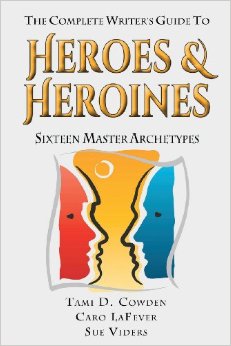 Tami Cowden, writer of The Complete Writer’s Guide to Heroes and Heroines: Sixteen Literary Archetypes, was in Atlanta recently teaching the workshop The Men We Love, the Women We Want to Be: Using Hero and Heroine Archetypes to Create Dynamic Characters. The day course was organized by the Georgia Romance Writers group. Cowden provided great insight on how to use different men and women archetypes to build our characters.These were my takeaways from her workshop:
Tami Cowden, writer of The Complete Writer’s Guide to Heroes and Heroines: Sixteen Literary Archetypes, was in Atlanta recently teaching the workshop The Men We Love, the Women We Want to Be: Using Hero and Heroine Archetypes to Create Dynamic Characters. The day course was organized by the Georgia Romance Writers group. Cowden provided great insight on how to use different men and women archetypes to build our characters.These were my takeaways from her workshop:
What is an archetype?
- Archetype is a pattern for character, it is not a stereotype.
- Archetypes are based on motivation.
- Every writer will use them differently because different characters can be created from the same archetypal family.
- Archetype is about understanding why characters do the things they do?
- There are two lists of archetypes for heroes and heroines because society and readers view men and women differently even when they are fulfilling the same roles.
- Any archetype can do anything, the difference is their motivation - the why. Even villains are motivated, they are the heroes of their own story.
- Characterization should reflect how the character views life.
- You have natural conflict because people are poles apart or they are too much alike.
Using core archetypes:
- When using core archetypes for characterization, there will be character growth as the story evolves but the character will stay within the same archetypal family - the personality change will not be as big.
- These archetypes jump out at readers the most and are the most memorable.
- In a romance, whatever is keeping the character from achieving love has been tempered. The personality hasn’t changed, but they are just “a little less so.”
Evolving archetypes:
- When using evolving archetypes for characterization, the character is so changed that he/she becomes a new archetype.
- The character develops a new motivation in their life, their world view changes.
- The causes that lead to the change for the evolving archetype have to be very strong to make it believable.
- Example: Pretty Woman from Chief to Best Friend, in Titanic from Waif to Spunky Kid (see full archetype list below).
Layered archetypes:
- When using layered archetypes, characters have the motivation and attributes of more than one archetype.
- Layering requires caution because the character can become muddled.
- It is very difficult to have a character with two or three motivating forces.
- Use when the story demands a character with a worldview and attitudes of different archetypes.
- Example: Rhett Butler is both a Chief and Bad Boy. He wants control but he will not work within the system.
The Men We Love, Eight Male Archetypes
The Chief
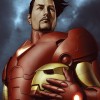 The Chief is driven by power, control and pride. When we are creating internal conflict we think about how do he will get over himself and give over control. Chiefs tend to be people who work within a system and make the system work for them. He can be unsympathetic. He doesn’t like to hear excuses. He has expectations and he wants them met. He is very domineering. He is love or hate kinda guys.Ex. Tony Stark in Iron Man - he is motivated by a need to control and power
The Chief is driven by power, control and pride. When we are creating internal conflict we think about how do he will get over himself and give over control. Chiefs tend to be people who work within a system and make the system work for them. He can be unsympathetic. He doesn’t like to hear excuses. He has expectations and he wants them met. He is very domineering. He is love or hate kinda guys.Ex. Tony Stark in Iron Man - he is motivated by a need to control and power
The Bad Boy
 The Bad Boy’s driving force is rebellion. While the Chief works within the system, the Bad Boy is trying to overthrow it. A common story is the Bad Boy that has a Chief for a father. Bad Boys tend to be very charismatic. He gets along well with people in a way the Chief can’t. He is intuitive and street smart. He can be pessimistic and expect the worst from people. He is likely to be volatile.Ex. Tyrion Lannister in The Game of Thrones and the Wolverine
The Bad Boy’s driving force is rebellion. While the Chief works within the system, the Bad Boy is trying to overthrow it. A common story is the Bad Boy that has a Chief for a father. Bad Boys tend to be very charismatic. He gets along well with people in a way the Chief can’t. He is intuitive and street smart. He can be pessimistic and expect the worst from people. He is likely to be volatile.Ex. Tyrion Lannister in The Game of Thrones and the Wolverine
The Charmer
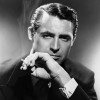 The Charmer’s driving force is manipulation. He works very hard at not working. He is very creative, witty and personable. He can be irresponsible, elusive and insincere. He is like a chameleon, becoming what the other person wants him to be.Ex. Cary Grant and Fred Astaire in most of their roles.
The Charmer’s driving force is manipulation. He works very hard at not working. He is very creative, witty and personable. He can be irresponsible, elusive and insincere. He is like a chameleon, becoming what the other person wants him to be.Ex. Cary Grant and Fred Astaire in most of their roles.
The Best Friend
 The Best Friend’s driving force is community. He is cooperative and doesn’t need to be in charge. He wants people to work together to achieve goals. He is a nice guy but can be complacent and lacking ambition. He is not driven to get ahead and can be myopic because he tends to think the best of people. The heroine at times doesn’t perceive him as the best mate material. He is the heroine’s best friend and conflict arises because they haven’t looked at themselves in a romantic way.Ex. George Bailey in It’s a Wonderful Life and Peeta Mellark in The Hunger Games
The Best Friend’s driving force is community. He is cooperative and doesn’t need to be in charge. He wants people to work together to achieve goals. He is a nice guy but can be complacent and lacking ambition. He is not driven to get ahead and can be myopic because he tends to think the best of people. The heroine at times doesn’t perceive him as the best mate material. He is the heroine’s best friend and conflict arises because they haven’t looked at themselves in a romantic way.Ex. George Bailey in It’s a Wonderful Life and Peeta Mellark in The Hunger Games
The Lost Soul
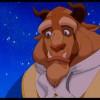 The Lost Soul’s driving force is redemption. He has been isolated from society for some reason. Sometimes it is a physical impediment like Phantom of the Opera. What he wants is to come back to society and be accepted. He is very devoted - if he loves, he loves deeply. He can be vulnerable and very discerning. He tends to brew and be unforgiving. He feels things very deeply and can be fatalistic. Writers will probably have to build him as an evolving archetype or the reader will feel sorry for the heroine.Ex. Dexter Morgan in Dexter, John Snow in The Game of Thrones, Beast in Beauty and the Beast, Batman and Heathcliff
The Lost Soul’s driving force is redemption. He has been isolated from society for some reason. Sometimes it is a physical impediment like Phantom of the Opera. What he wants is to come back to society and be accepted. He is very devoted - if he loves, he loves deeply. He can be vulnerable and very discerning. He tends to brew and be unforgiving. He feels things very deeply and can be fatalistic. Writers will probably have to build him as an evolving archetype or the reader will feel sorry for the heroine.Ex. Dexter Morgan in Dexter, John Snow in The Game of Thrones, Beast in Beauty and the Beast, Batman and Heathcliff
The Professor
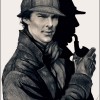 The Professor’s driving force is knowledge and being right, being the one who knows. He is an expert, an analytical thinker. He is insular, introverted and inflexible. He spends a lot of time in his head. He can be inhibited and discount the power of emotions. Storylines with the Professor tend to be about sexual awakening and getting in touch with emotions.Ex. Professor in Gilligan's Island, Sherlock Holmes and Sheldon Cooper in The Big Bang Theory.
The Professor’s driving force is knowledge and being right, being the one who knows. He is an expert, an analytical thinker. He is insular, introverted and inflexible. He spends a lot of time in his head. He can be inhibited and discount the power of emotions. Storylines with the Professor tend to be about sexual awakening and getting in touch with emotions.Ex. Professor in Gilligan's Island, Sherlock Holmes and Sheldon Cooper in The Big Bang Theory.
The Swashbuckler
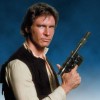 The Swashbuckler’s driving force is thrill. He loves life and loves to experience things. He lives life fully. He wants feelings and doesn’t want to live in his head. He is fearless and exciting but unreliable. He will gamble away the mortgage. He is selfish, because he tends to be about himself. He loves the adrenaline rush.Ex. Han Solo in Star Wars, Captain Jack Sparrow in Pirates of the Caribbean and Joey in Friends
The Swashbuckler’s driving force is thrill. He loves life and loves to experience things. He lives life fully. He wants feelings and doesn’t want to live in his head. He is fearless and exciting but unreliable. He will gamble away the mortgage. He is selfish, because he tends to be about himself. He loves the adrenaline rush.Ex. Han Solo in Star Wars, Captain Jack Sparrow in Pirates of the Caribbean and Joey in Friends
The Warrior
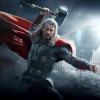 The Warrior’s driving force is justice. He loves a mission and sense of duty. He has a specific task that must be accomplished for the sake of others. He is tenacious, noble and sticks to his guns with a sense of honor. He has high expectations for others to meet his standards. He can be rigid and merciless with a narrow view.Ex. Thor, Spider Man, Super Man and most super heroes One way to tell the difference between a Warrior and a Chief is that a warrior will obey a higher command unless they perceive the Chief is not living up to their standards. When you have a Warrior villain the way to turn them is to reveal that their beliefs are incorrect.
The Warrior’s driving force is justice. He loves a mission and sense of duty. He has a specific task that must be accomplished for the sake of others. He is tenacious, noble and sticks to his guns with a sense of honor. He has high expectations for others to meet his standards. He can be rigid and merciless with a narrow view.Ex. Thor, Spider Man, Super Man and most super heroes One way to tell the difference between a Warrior and a Chief is that a warrior will obey a higher command unless they perceive the Chief is not living up to their standards. When you have a Warrior villain the way to turn them is to reveal that their beliefs are incorrect.
The Women we Want to Be, Eight Heroine Archetypes
The Boss
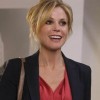 The Boss’ driving force is power and control. She is viewed differently than a man who wants to be in control. She is confident, dynamic, competitive. She is blunt, workaholic and arrogant. Part of the conflict comes from what is the expectation of what a woman is suppose to be and how does that work against her?Ex. Claire Dunphy in Modern Family (inherent conflict between her and her Swashbuckler husband), Regina in Once Upon a Time, Murphy Brown and Hillary Clinton (married to a Chief) How do you make a boss likable? You reveal the motivation upfront. Why is the drive for power so important to her? For example in American Beauty, Carolyn Burnham (Annette Benign) says to her daughter “You ungrateful little brat! Just look at everything you have. When I was your age, we... lived in a duplex! We didn't even have our own house!” Carolyn’s motivation becomes clear with that statement.
The Boss’ driving force is power and control. She is viewed differently than a man who wants to be in control. She is confident, dynamic, competitive. She is blunt, workaholic and arrogant. Part of the conflict comes from what is the expectation of what a woman is suppose to be and how does that work against her?Ex. Claire Dunphy in Modern Family (inherent conflict between her and her Swashbuckler husband), Regina in Once Upon a Time, Murphy Brown and Hillary Clinton (married to a Chief) How do you make a boss likable? You reveal the motivation upfront. Why is the drive for power so important to her? For example in American Beauty, Carolyn Burnham (Annette Benign) says to her daughter “You ungrateful little brat! Just look at everything you have. When I was your age, we... lived in a duplex! We didn't even have our own house!” Carolyn’s motivation becomes clear with that statement.
The Seductress
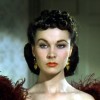 The Seductress’ driving force is personal security. She cannot trust other people to take care of her. She is clever, intelligent, strong, resourceful, resilient and assertive. She is cynical and does not think well of people. She is insecure and doesn’t not have faith that things will go well. She can be manipulative. This character is very hard to write as a heroine because it is difficult to make her likable.Ex. Wanda in A Fish Called Wanda, Meredith in Bad Teacher, Scarlett O’Hara in Gone with the Wind, Eva Peron in Evita and Lady Mary in Downton Abbey
The Seductress’ driving force is personal security. She cannot trust other people to take care of her. She is clever, intelligent, strong, resourceful, resilient and assertive. She is cynical and does not think well of people. She is insecure and doesn’t not have faith that things will go well. She can be manipulative. This character is very hard to write as a heroine because it is difficult to make her likable.Ex. Wanda in A Fish Called Wanda, Meredith in Bad Teacher, Scarlett O’Hara in Gone with the Wind, Eva Peron in Evita and Lady Mary in Downton Abbey
The Spunky Kid
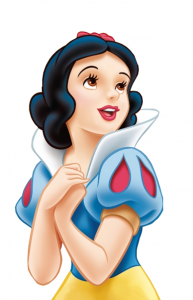 The Spunky Kid’s driving character is finding her niche. In chick-lit the protagonist is usually a Spunky Kid. She is reliable, loyal, tolerant and a nice person. People depend on her. She is sarcastic and self-deprecating. She doesn’t have a lot of confidence in herself. She is not thinking the best of everyone.Ex. Mary Tyler Moore and Snow White
The Spunky Kid’s driving character is finding her niche. In chick-lit the protagonist is usually a Spunky Kid. She is reliable, loyal, tolerant and a nice person. People depend on her. She is sarcastic and self-deprecating. She doesn’t have a lot of confidence in herself. She is not thinking the best of everyone.Ex. Mary Tyler Moore and Snow White
The Free Spirit
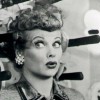 The Free Spirit’s driving force is self-direction. She wants to dance to her own tune and doesn’t want the world to judge her for that. She is very sincere, upbeat and imaginative. She is impulsive and can meddle in other’s lives and problems. Other people would describe her as all-over the place and undisciplined. She doesn’t fit into a mold. For natural conflict you can pair her with Chiefs or Professors who would frown at her outside-the-box behavior. She is very comfortable with being herself and all she wants is for others to let her be. These characters are more likely to show up in romantic comedy.Ex. Lucy in I love Lucy, Phoebe in Friends, Luna Lovegood in Harry Potter
The Free Spirit’s driving force is self-direction. She wants to dance to her own tune and doesn’t want the world to judge her for that. She is very sincere, upbeat and imaginative. She is impulsive and can meddle in other’s lives and problems. Other people would describe her as all-over the place and undisciplined. She doesn’t fit into a mold. For natural conflict you can pair her with Chiefs or Professors who would frown at her outside-the-box behavior. She is very comfortable with being herself and all she wants is for others to let her be. These characters are more likely to show up in romantic comedy.Ex. Lucy in I love Lucy, Phoebe in Friends, Luna Lovegood in Harry Potter
The Waif
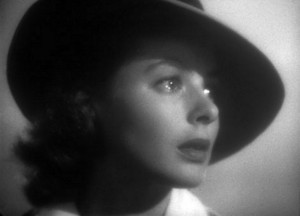 The Waif’s driving force is love and acceptance. She wants to be loved and accepted because usually she has been rejected in some way. She tends to be pure, trusting and kind. She can be very impressionable and is somewhat passive. In action films most of the heroines tend to be Waifs. They are a good match for a Warrior. The Waif is resilient, she will bend, not break. She will react when she is pinned against the wall. When writing a Waif show what she is capable of in the first few pages.Ex. Emma Swan in Once Upon a Time, Sansa in The Game of Thrones, Ilsa in Casablanca and Bella Swan in Twilight
The Waif’s driving force is love and acceptance. She wants to be loved and accepted because usually she has been rejected in some way. She tends to be pure, trusting and kind. She can be very impressionable and is somewhat passive. In action films most of the heroines tend to be Waifs. They are a good match for a Warrior. The Waif is resilient, she will bend, not break. She will react when she is pinned against the wall. When writing a Waif show what she is capable of in the first few pages.Ex. Emma Swan in Once Upon a Time, Sansa in The Game of Thrones, Ilsa in Casablanca and Bella Swan in Twilight
The Librarian
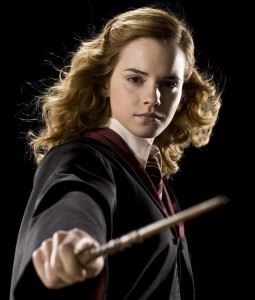 The Librarian’s driving force is knowledge and being right. She is efficient, serious, dependable. They can be rigid, repressed and perfectionist. No one likes a know-it-all. In a romance these are sexual awakening stories. The heroine needs to get out of her head and get more into the emotional side of life. There is natural conflict if paired with a Charmer.Ex. Scully in the XFiles and Hermione in Harry Potter
The Librarian’s driving force is knowledge and being right. She is efficient, serious, dependable. They can be rigid, repressed and perfectionist. No one likes a know-it-all. In a romance these are sexual awakening stories. The heroine needs to get out of her head and get more into the emotional side of life. There is natural conflict if paired with a Charmer.Ex. Scully in the XFiles and Hermione in Harry Potter
The Crusader
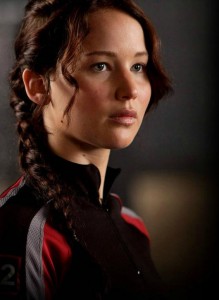 The Crusader’s driving force is her cause, the mission, justice and duty. She is tenacious, principled and persuasive. She will use words more than weapons. Her flaws are that she can be self-righteous, judgmental and rash. She sees things in black and white, rather than shades of gray. Her mantra is “You are either with me or against me.” In a romance, the character growth is about tempering the devotion to the mission so that they realize they have time for other things in their life. The Boss is more pragmatic than the Crusader.Ex. Arya Stark in The Game of Thrones, Katniss Everdeen in The Hunger Games, Buffy in The Vampire Slayer, Veronica Mars
The Crusader’s driving force is her cause, the mission, justice and duty. She is tenacious, principled and persuasive. She will use words more than weapons. Her flaws are that she can be self-righteous, judgmental and rash. She sees things in black and white, rather than shades of gray. Her mantra is “You are either with me or against me.” In a romance, the character growth is about tempering the devotion to the mission so that they realize they have time for other things in their life. The Boss is more pragmatic than the Crusader.Ex. Arya Stark in The Game of Thrones, Katniss Everdeen in The Hunger Games, Buffy in The Vampire Slayer, Veronica Mars
The Nurturer
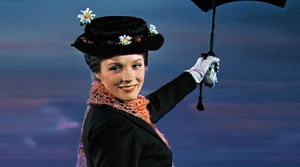 The Nurturer’s driving force is family and love. Her virtues are selflessness and optimism. She is also very capable, idealistic, compromising and martyred. She will bend the rules in order to protect those she loves. She can give everything of herself. While the Waif is seeking love, the Nurturer is giving love. They are good characters to pair with Lost Souls since they have the patience for them.Ex. Mary Poppins and Cinderella in the new Disney remakeTo learn more about character archetypes read The Complete Writer’s Guide to Heroes and Heroines: Sixteen Literary Archetypes.
The Nurturer’s driving force is family and love. Her virtues are selflessness and optimism. She is also very capable, idealistic, compromising and martyred. She will bend the rules in order to protect those she loves. She can give everything of herself. While the Waif is seeking love, the Nurturer is giving love. They are good characters to pair with Lost Souls since they have the patience for them.Ex. Mary Poppins and Cinderella in the new Disney remakeTo learn more about character archetypes read The Complete Writer’s Guide to Heroes and Heroines: Sixteen Literary Archetypes.